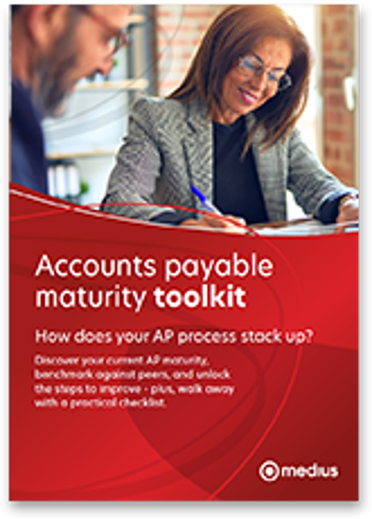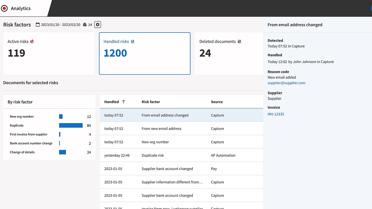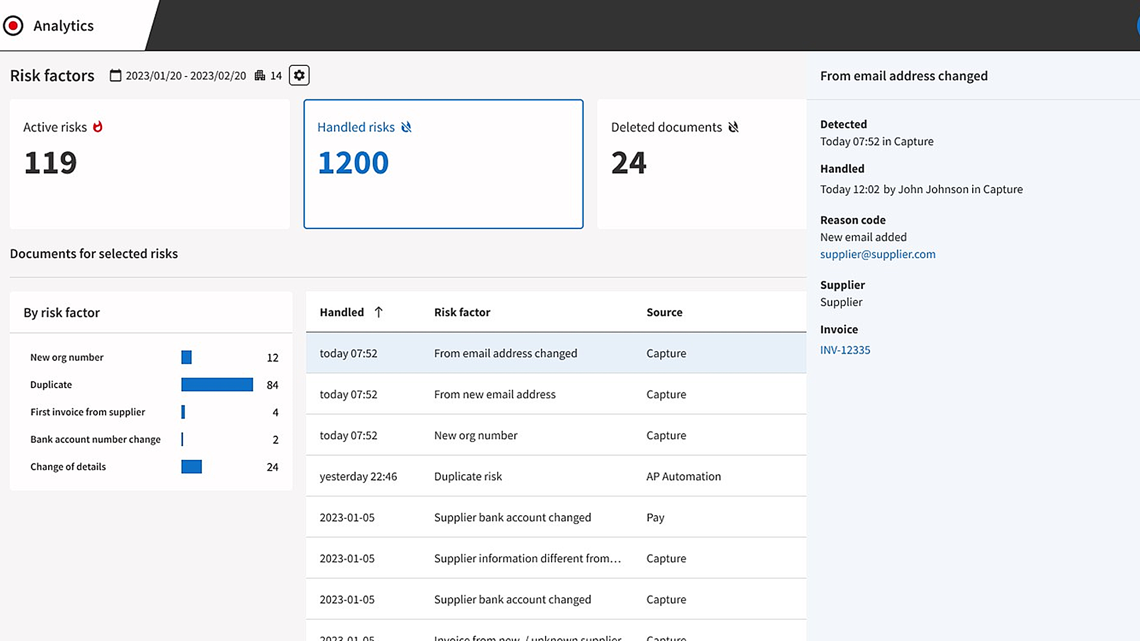The overlooked risks of going green with accounts payable
- Introduction
- When paperless does not mean secure
- Why audit readiness suffers with poor digital workflows
- Digital payments introduce new fraud risks
- The danger of assuming automation is enough
- Sustainability must include controls and compliance
- Rethinking AP workflows for long-term resilience
- How Medius supports going green the right way
Hear what's covered in this article:
Paperless processes are often seen as a sustainability win. In accounts payable, this shift typically relies on AP automation to eliminate manual tasks and reduce paper use. But when these systems are adopted without the right internal controls, they can expose gaps in compliance, audit readiness, and fraud prevention.
Teams focused on sustainability may overlook the governance risks introduced by poorly managed digital workflows. Going green is worthwhile, but only when it's done in a way that safeguards the integrity of financial operations.
When paperless does not mean secure
The move away from physical invoices can create a false sense of control. Teams may assume that digital equals secure, but in many cases, it opens the door to risks that did not exist with traditional workflows. Email approvals, unstructured payment requests, and decentralized platforms all contribute to gaps in visibility and oversight.
Audit trails are one of the first areas affected. Without a centralized system to log activity, trace decisions, or timestamp approvals, financial records lose their integrity. This makes it harder to respond to audits, track errors, or defend against internal and external scrutiny. In some cases, audit failure can stem from nothing more than inconsistent documentation or missing proof of approval. These may be small issues individually, but they can carry significant weight in compliance checks.
Why audit readiness suffers with poor digital workflows
Regulatory frameworks require organizations to maintain clear, verifiable records of all transactions. When AP teams rely on scattered tools or manual inputs within digital systems, they often cannot produce the required documentation quickly or accurately.
Common problems include incomplete approval chains, missing supplier data, or improperly archived invoices. These deficiencies complicate both internal reviews and external audits, potentially triggering penalties or delays. In some cases, manual reconciliation becomes the only way to recreate a transaction’s history.
Digital transformation without attention to governance creates blind spots. Systems that don’t automatically record changes or provide user-level access logs can make it impossible to verify the authenticity of entries. And when audit season arrives, finance teams may find themselves racing to reconstruct paper trails that no longer exist.
Digital payments introduce new fraud risks
As more organizations replace checks with electronic payments, vendor data integrity becomes critical. Changes to supplier bank details or payment terms must be tightly controlled. When AP teams lack automated oversight, they increase their exposure to fraud.
As digital payment volumes grow, proactive fraud detection becomes critical to safeguarding finance operations. For instance, if a vendor’s bank account is altered without proper checks, or fake invoices are approved through informal channels, losses can occur before anyone notices. These threats often intensify during periods of operational change, such as the shift to paperless processing.
Real-time monitoring and anomaly detection tools play a crucial role in identifying these threats. They provide the layer of visibility needed to detect abnormal behavior and prevent unauthorized transactions before they are executed. Fraudsters often rely on short review windows and unverified data to sneak through payments. Without intelligent alerting and approvals, AP teams can be caught off guard.
Paperless? Great! Defenseless? Not so much.
Paperless doesn’t equal protected. As more AP teams digitize, fraudsters are finding new ways to exploit weak controls, decentralized data, and email-based approvals. The AP fraud fighters toolkit shows you how to build the right defenses for a digital-first finance function—so your green initiatives don’t come with red flags.
The danger of assuming automation is enough
Adopting AP automation does not automatically eliminate risk. Systems that process invoices faster may still lack embedded policies to verify legitimacy or enforce segregation of duties. If automation tools are not integrated with compliance and audit functions, they can accelerate errors instead of preventing them.
Modern AP solutions must combine speed with structure. This means ensuring that every approval follows a defined workflow, that all changes are logged, and that exceptions are flagged immediately. Solutions that embed fraud detection offer another layer of protection, scanning for anomalies that might otherwise go unnoticed.
Another overlooked issue is permissions management. Without role-based access controls, even automated systems can allow unauthorized changes or approvals. Ensuring each user only has the access needed for their role is vital. It reduces the chance of internal fraud and improves accountability when something goes wrong.
Sustainability must include controls and compliance
Sustainability is not just about eliminating paper. It must also support financial governance. Without clear oversight, going green can reduce transparency and increase operational risk.
The right approach involves building digital processes that mirror and exceed the control benefits of paper. Vendor verification, approval hierarchy, and transaction visibility must all be embedded in the digital workflow. These elements form the foundation of secure and scalable AP operations.
Compliance is more than an annual requirement. It needs to be a continuous process. Every invoice, approval, and payment should be backed by automated policy enforcement and validation steps. AP leaders must design systems that automatically align with audit expectations so that readiness is always built in.

Rethinking AP workflows for long-term resilience
For AP leaders, the goal should not just be paperless processing, but resilient and accountable processing. This requires automation tools that support audit readiness, fraud prevention, and real-time monitoring.
Platforms that include policy-based approval routing, document version control, and automated compliance checks are better equipped to handle both regulatory demands and sustainability goals. These systems allow finance teams to pursue green initiatives without compromising their control environment.
AI innovation is also shaping the future of AP automation, enabling predictive insights, improving fraud detection, and adapting workflows as vendor behavior evolves. For organizations managing large invoice volumes, these adaptive tools can reduce the burden of exception handling while improving visibility.
In addition, training is a key component of long-term success. Staff must understand how to work within new systems, recognize suspicious behavior, and follow escalation procedures. Automation supports control, but people ensure that control is effective. Creating a culture of compliance reinforces the benefits of technology.

Find out if your AP process is ready for intelligent automation
Digitizing invoices is good, but without the intelligence to detect fraud, flag anomalies, or scale with control, your AP process is still exposed. The Accounts Payable maturity toolkit helps you assess where your team stands today and what it takes to move toward a smarter, safer, AI-enabled future.
How Medius supports going green the right way
Sustainable finance should never come at the cost of control. When paperless workflows are designed with compliance and security in mind, the benefits extend far beyond the environment. Teams can process faster, reduce errors, and operate with greater confidence.
Sustainable AP practices require more than just reducing paper. They call for green strategies built on automation, control, and visibility. For organizations ready to modernize, this balanced approach creates stronger systems, better vendor relationships, and long-term success.
Sustainability, compliance, and security are not mutually exclusive. With the right AP automation approach, finance teams can achieve all three. The key is to design systems that are as intelligent and accountable as they are efficient. That is the path to a greener and more resilient future in finance.

See how Medius can help your team reduce paper, improve control, and build a more sustainable AP function.








